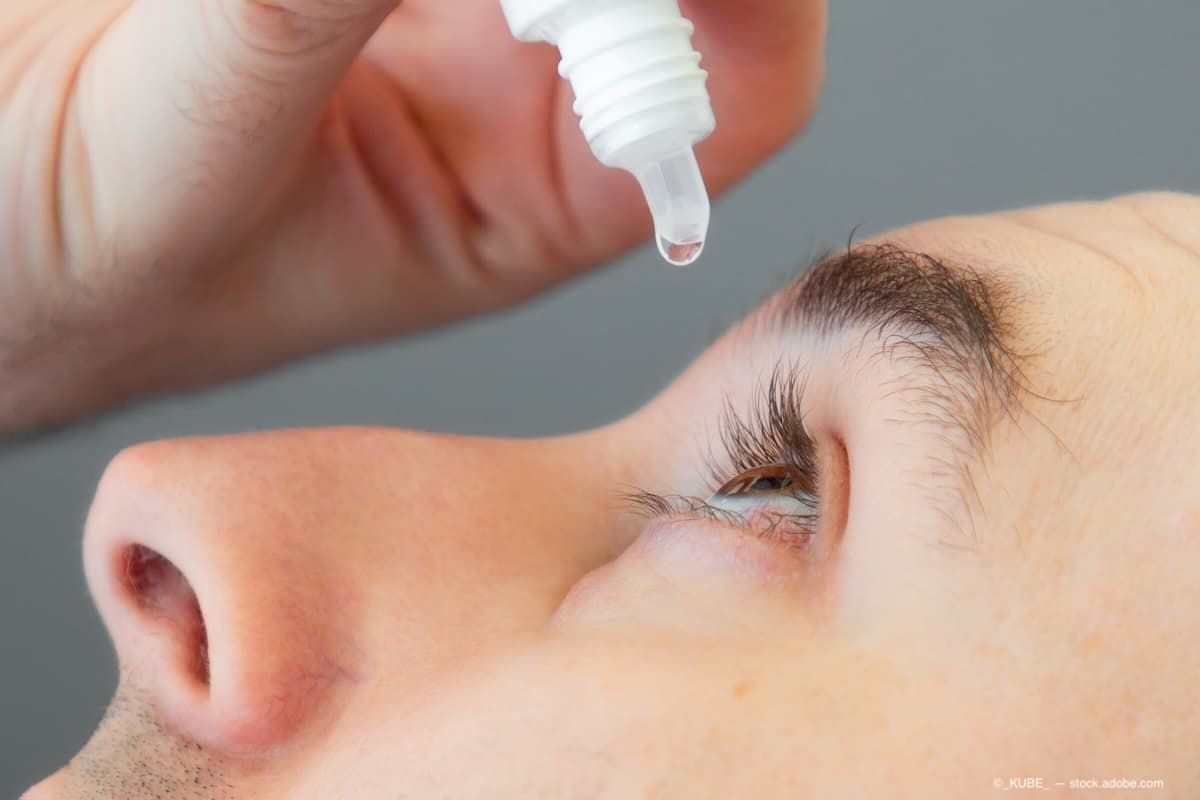News
Article
Alcon’s dry eye candidate achieves positive topline results in Phase 3 trials
Author(s):
AR-15512, a topical transient receptor potential melastatin 8 agonist, is a first-in-class product candidate for the treatment of the signs and symptoms of dry eye disease. Alcon plans to file a New Drug Application for AR-15512 with the FDA in mid-2024.
(Image Credit: AdobeStock/Shining Pro)

Alcon this week announced positive topline results from the two pivotal Phase 3 clinical trials (COMET-2 and COMET-3 ) evaluating the safety and efficacy of AR-15512, a candidate treatment for the signs and symptoms of dry eye disease (DED).
According to a company news release,1 in both COMET-2 (NCT05285644) and COMET-3 (NCT05360966), which enrolled more than 930 dry eye subjects in total (randomized 1:1 to AR-15512 or vehicle control), the primary endpoint of the proportion of subjects with at least a 10-mm increase in unanesthetized Schirmer’s score achieved statistical significance at Day 14 [p<0.0001]. These data are consistent with the proposed mechanism of action of AR-15512.
With the positive data, Alcon said in its news release it plans to file a New Drug Application (NDA) for AR-15512 with the FDA in mid-2024.
“We are excited by AR-15512 as it has the potential to address the limitations of current dry eye prescription options and provide Eye Care Professionals (ECPs) and dry eye sufferers with a new and effective approach to the management of dry eye, a chronic and undertreated disease,” David Endicott, CEO of Alcon, said in the news release. “AR-15512 is the first product candidate in our emerging ophthalmic pharmaceutical portfolio, representing our legacy of commitment to innovation in eye care.”
AR-15512 is a transient receptor potential melastatin 8 (TRPM8) agonist. TRPM8 is a cold-sensing receptor located in the cornea and eyelid and can potentially relieve symptoms of dry eye disease. The drug candidate was brought into Alcon’s portfolio following the $930 million acquisition of Aerie Pharmaceuticals in late 2022.
Moreover, Alcon noted in its news release that AR-15512 represents an opportunity to bring relief to dry eye sufferers. While DED is one of the most common ocular disorders, affecting an estimated 38 million people in the US, only about 18 million are diagnosed and less than 10% of those diagnosed are treated with a prescription product. This represents the significant need for an effective chronic treatment that can provide rapid natural tear production.1
In these studies, additional data derived from secondary endpoints demonstrated the rapid onset and sustained tear production associated with AR-15512 compared to vehicle, as early as Day 1 and persistent to Day 90. Overall, AR-15512 was well tolerated and no serious ocular adverse events were reported.
“A key gap in dry eye medications is rapid speed of onset,” said Edward Holland, MD, Professor of Ophthalmology at the University of Cincinnati, a key advisor on COMET-2 and -3 and Senior Scientific Advisor at Alcon. “AR-15512 demonstrated this important achievement in both pivotal efficacy and safety studies and it represents a first-in-class candidate for chronic dry eye.”
Alcon's ophthalmic pharmaceutical portfolio currently includes Rocklatan, Rhopressa, Simbrinza, Eysuvis, and Inveltys.
About Dry Eye
Dry eye disease affects an estimated 38 million adults in the United States and an estimated 719 million more adults globally.2 While once considered a disease of aging populations, modern advancements, such as prolonged digital screen time, have contributed to a significant rise in DED across age and gender.3 Many existing prescription options for dry eye disease are generally regarded by many eye care professionals and patients as inadequate due to low treatment efficacy, slow onset of action and/or poor tolerability.4
References:
1. Alcon Announces Positive Topline Results From Phase 3 COMET Trials of AR-15512, a Novel Topical Drug Candidate for Dry Eye. www.businesswire.com. Published January 9, 2024. Accessed January 10, 2024. https://www.businesswire.com/news/home/20240109285944/en
2. Market Scope 2023 Dry Eye Product Market Review; does not include OTC artificial tears and other Rx anti-inflammatory and tear stimulants.
3. Al-Mohtaseb Z, Schachter S, Shen Lee B, Garlich J, Trattler W. The Relationship Between Dry Eye Disease and Digital Screen Use. Clin Ophthalmol. 2021 Sep 10;15:3811-3820. doi: 10.2147/OPTH.S321591. PMID: 34531649; PMCID: PMC8439964.
4. Improved Dry Eye Drugs for 2022 and Beyond. American Academy of Ophthalmology. Published November 4, 2021. https://www.aao.org/eye-health/tips-prevention/new-dry-eye-treatments-ocular-surface-disease
Newsletter
Don’t miss out—get Ophthalmology Times updates on the latest clinical advancements and expert interviews, straight to your inbox.




